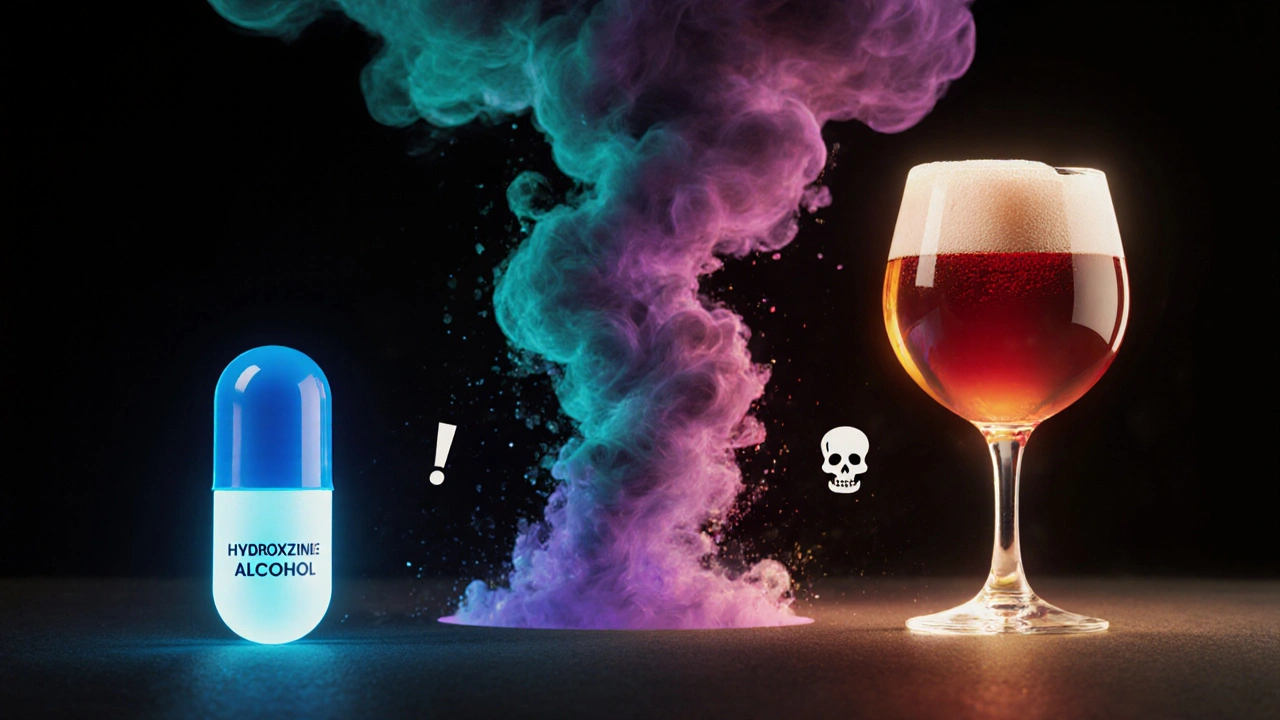Hydroxyzine Side Effects: A Practical Overview
When dealing with hydroxyzine side effects, hydroxyzine is a first‑generation antihistamine used for anxiety, itching, and nausea. Also known as Vistaril, it works by blocking histamine receptors in the brain and body, which can lead to a mix of calming benefits and unwanted reactions. Knowing exactly what to expect helps you stay ahead of uncomfortable symptoms and adjust your treatment plan early.
Hydroxyzine belongs to the broader class of antihistamines, drugs that counteract the effects of histamine released during allergic reactions. First‑generation agents like hydroxyzine readily cross the blood‑brain barrier, unlike newer generations that stay peripheral. This property explains why they can cause central nervous system effects, but it also makes them useful for short‑term anxiety relief. Understanding the antihistamine family clarifies why certain side effects appear and how they differ from other allergy meds.
One of the most common complaints is sedation, a state of drowsiness or sleepiness caused by the drug’s action on the brain. Many users report feeling unusually tired after a dose, especially when taken at night. Sedation can be helpful if you need a calming effect before bedtime, but it becomes risky if you plan to drive, operate machinery, or need full alertness. The intensity often depends on dosage, personal sensitivity, and whether other sedating substances are present.
Another frequent effect is dry mouth, reduced saliva production that leads to a sticky tongue and throat discomfort. This anticholinergic side effect stems from hydroxyzine’s blockage of acetylcholine, a neurotransmitter that stimulates saliva glands. Dry mouth can worsen oral health, increase plaque buildup, and make swallowing uncomfortable. Simple measures—like sipping water, chewing sugar‑free gum, or using saliva substitutes—can ease the irritation while you stay on the medication.
Hydroxyzine does not work in isolation; it interacts with many other drugs. drug interactions, situations where one medication changes the effect or safety profile of another, can amplify sedation, raise heart rhythm risks, or alter how the liver processes the drug. For example, combining hydroxyzine with opioids, benzodiazepines, or alcohol can lead to profound respiratory depression. Likewise, certain antidepressants that affect serotonin levels may increase the chance of serotonin syndrome. Always review your full medication list with a healthcare professional before starting hydroxyzine.
Managing Common Side Effects Effectively
Knowing the typical side effects gives you a roadmap for mitigation. If sedation is too strong, consider taking the dose earlier in the evening or asking your doctor about a lower strength. For dry mouth, keep a bottle of water handy, avoid caffeine and tobacco, and maintain good oral hygiene. When it comes to drug interactions, a quick medication check can prevent dangerous combos; many pharmacists offer free reviews. Also, monitor your body’s response during the first week—most side effects appear early and may lessen as your system adapts. If any reaction feels severe, such as trouble breathing, rapid heartbeat, or intense confusion, seek medical help right away.
Below you’ll find a curated collection of articles that dig deeper into hydroxyzine’s safety profile, compare it with other antihistamines, and share real‑world tips for handling the side effects we just discussed. Whether you’re new to the medication or looking for ways to fine‑tune your regimen, the posts ahead cover everything from dosage strategies to interaction warnings, giving you a solid base to make informed decisions.
- October
15
2025 - 5
Hydroxyzine and Alcohol: Why This Mix Is a Hazard
Learn why mixing hydroxyzine with alcohol is risky, recognize danger signs, and get safe alternatives. Follow clear guidelines to protect your health.
Read More